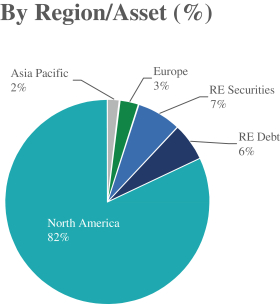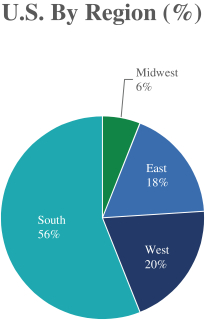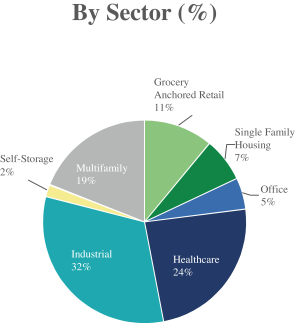Insurance may not cover all losses which may adversely affect us.
We carry and intend to continue to carry insurance covering our properties under policies the Advisor deems appropriate. However, various types of losses, such as losses due to wars, riots, nuclear reaction, terrorist acts, earthquakes, floods, hurricanes, pollution or environmental matters, generally are either uninsurable, or not economically insurable (i.e., insurable at such high rates that to maintain such coverage would cause an adverse impact on the related investments), or may be subject to insurance coverage limitations, such as large deductibles or co-payments or insurance only being available in amounts less than the full market value or replacement cost. Should an uninsured loss or a loss in excess of insured limits occur, we could lose all or a portion of the capital we have invested in an investment, as well as the anticipated future revenue from the investment. In that event, we might nevertheless remain obligated for financial and other obligations related to the investment. Any loss of this nature would adversely affect us.
In addition, inflation, changes in building codes and ordinances, environmental considerations, provisions in loan documents encumbering the portfolio properties pledged as collateral for loans, and other factors might also keep us from using insurance proceeds to replace or renovate a real property investment after it has been damaged or destroyed. Under those circumstances, the insurance proceeds we receive might be inadequate to restore our economic position on the damaged or destroyed property, which would adversely affect us.
We could become subject to liability for environmental violations, regardless of whether we caused such violations.
We could become subject to liability in the form of fines or damages for noncompliance with environmental laws and regulations. These laws and regulations generally govern wastewater discharges, air emissions, the operation and removal of underground and above-ground storage tanks, the use, storage, treatment, transportation and disposal of solid hazardous materials, the remediation of contaminated property associated with the disposal of solid and hazardous materials and other health and safety-related concerns. Some of these laws and regulations may impose joint and several liability on tenants, owners or managers for the costs of investigation or remediation of contaminated properties, regardless of fault or the legality of the original disposal. Under various federal, state and local environmental laws, ordinances and regulations, a current or former owner or manager of real property may be liable for the cost to remove or remediate hazardous or toxic substances, wastes, or petroleum products on, under, from, or in such property. These costs could be substantial and liability under these laws may attach whether or not the owner or manager knew of, or was responsible for, the presence of such contamination. Even if more than one person may have been responsible for the contamination, each liable party may be held entirely responsible for all of the clean-up costs incurred.
In addition, third parties may sue the owner or manager of a property for damages based on personal injury, natural resources, or property damage or for other costs, including investigation and clean-up costs, resulting from the environmental contamination. The presence of contamination on one of our properties, or the failure to properly remediate a contaminated property, could give rise to a lien in favor of the government for costs it may incur to address the contamination, or otherwise adversely affect our ability to sell or lease the property or borrow using the property as collateral. In addition, if contamination is discovered on our properties, environmental laws may impose restrictions on the manner in which the property may be used or businesses may be operated, and these restrictions may require substantial expenditures or prevent us from entering into leases with prospective tenants. There can be no assurance that future laws, ordinances or regulations will not impose any material environmental liability, or that the environmental condition of our properties will not be affected by the operations of the tenants, by the existing condition of the land, by operations in the vicinity of the properties. There can be no assurance that these laws, or changes in these laws, will not have a material adverse effect on our business, results of operations or financial condition.
Our properties are, and any properties we acquire in the future will be, subject to property taxes that may increase in the future, which could adversely affect our cash flow.
Our properties are, and any properties we acquire in the future will be, subject to real and personal property taxes that may increase as property tax rates change and as the properties are assessed or reassessed by taxing authorities. Some of our leases may provide that the property taxes, or increases therein, are charged to the lessees as an expense related to the properties that they occupy. As the owner of the properties, however, we are ultimately responsible for payment of the taxes to the government. If property taxes increase, our tenants may be unable to make the required tax payments, ultimately requiring us to pay the taxes. In addition, we are generally responsible for property taxes related to any vacant space. If we purchase residential properties, the leases for such properties typically will not allow us to pass through real estate taxes and other taxes to residents of such properties. Consequently, any tax increases may adversely affect our results of operations at such properties.
We face risks in effecting operating improvements.
In some cases, the success of an investment will depend, in part, on our ability to restructure and effect improvements in the operations of a property. The activity of identifying and implementing restructuring programs and operating improvements at a property entails a high degree of uncertainty. There can be no assurance that we will be able to successfully identify and implement such restructuring programs and improvements.
26




